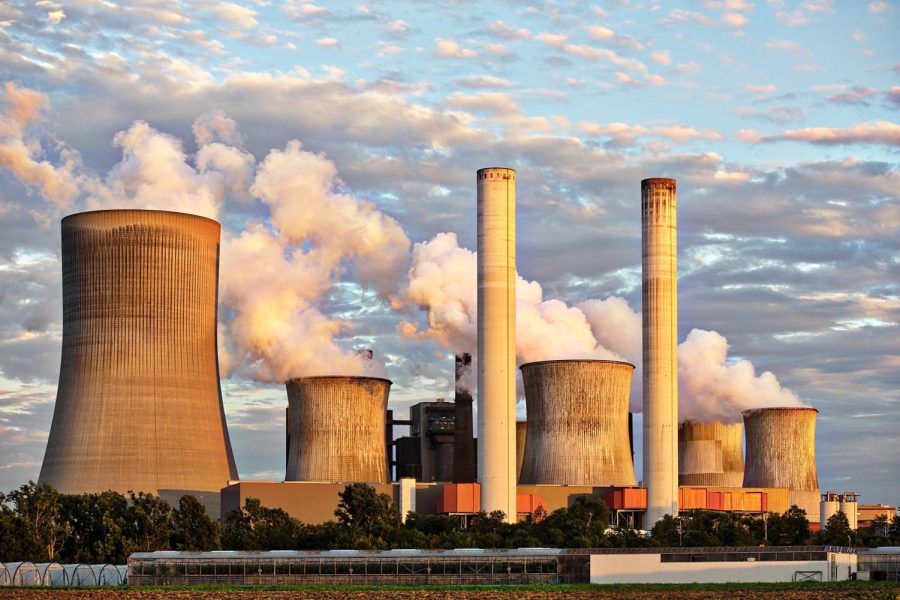Dangers of Hanford explained by expert panel
Waste from the Hanford nuclear reactor site in Washington will take until 3033 to clean. Photo courtesy of Pexels
April 19, 2023
CWU’s Museum of Culture and Environment (MCE) was packed more densely than steam in a smokestack as attendees filled the seats to learn about the nuclear history of the Hanford site.
The MCE hosted artist and author of “Hanford Reach: In the Atomic Field” Glenna Cole Allee, historian and educator Emily Washines, artist Roger Peet and anthropologist Mark Auslander on April 13 to share their expertise on the Hanford site, a former nuclear production site with a legacy of radioactive elements, according to CWU Museum Director Hope Amason.
The site is just 65 miles from Ellensburg, located in Benton County, Washington, and is a very controversial aspect to Washington’s history, according to Amason.
According to Washines, the planning for the cleanup within the Hanford site reaches all the way to the year 3033.
“There was a lot of contentiousness,” Allee said. “There were really different points of view, and it was hard to hold them all at once.”
The Hanford site was first utilized during WWII where uranium was processed into plutonium to create nuclear weapons. These weapons would be used in the atomic bombings of Nagasaki, Japan during WWII, while also leaving massive amounts of radioactive waste, according to Peet.
The plutonium gathered from the Hanford site contributed to the Trinity Device, the first nuclear weapon to explode on the planet, according to Peet.
“The thing that everyone had been working to, the desire to acquire this infinite source of destructive power in order to be able to deny it to other hostiles, to people that were perceived as enemies who were also presumed to be in pursuit of the same kind of power was suddenly unleashed in a manner that nobody really knew at the time,” Peet said.
Yakama Nation tribal member, Emily Washines, of Cree and Skokomish lineage, offered her insight to the Hanford site through her experience from Native perspectives. According to Washines, the resources within the site such as access to food and water are critical to the wellbeing of life around the site.
“My responsibility is to speak for the resources,” Washines said. “We protect the resources for those not yet born.”
The Columbia River offers an abundance of resources to the community, yet the community aspect seems to be missing from the site’s large scale and technical plans, according to Washines.
Washines has early memories of how meals were prepared within her tribe while also relating to the Yakama creation story, beginning with water, then the salmon, deer, elk, roots, berries and completed with water, according to Washines.
“That positive chain of life, giving transition from water to salmon to health to deer back to [the] roots. All those things that Emily was characterizing would be undercut by nuclear radiation,” Auslander said.
Though Hanford is perceived to have a legacy of radioactive destruction and waste consisting of groundwater leaks and underground tanks, there is also beauty that has come out of the site, according to Amason.
“On one end, there’s this legacy of pollution, but there’s also this legacy of [a] great habitat for a lot of different animals and plants that might otherwise have been developed,” Amazon said.
The health of those near the site in the 1940s were directly impacted by the radioactive waste, and the effects are still carrying into today, according to Washines.
“I have family members that don’t have thyroids, or are on thyroid medication,” Washines said.
The MCE previously held an event in 2013 showing the exhibit of Particles on the Wall: Art, Poetry and Science about Hanford, before moving on to WSU Tri-Cities Art Exhibition Center, Richland. Many of the artists struggled because of their connections to those who experienced the lasting effects of exposure to radiation, according to Amason.
“What we found was that a lot of the artists really struggled because, on one hand their family members have been exposed to radiation,” Amason said. “And in some cases, people had thyroid cancer and other sort of health concerns as a result.”


